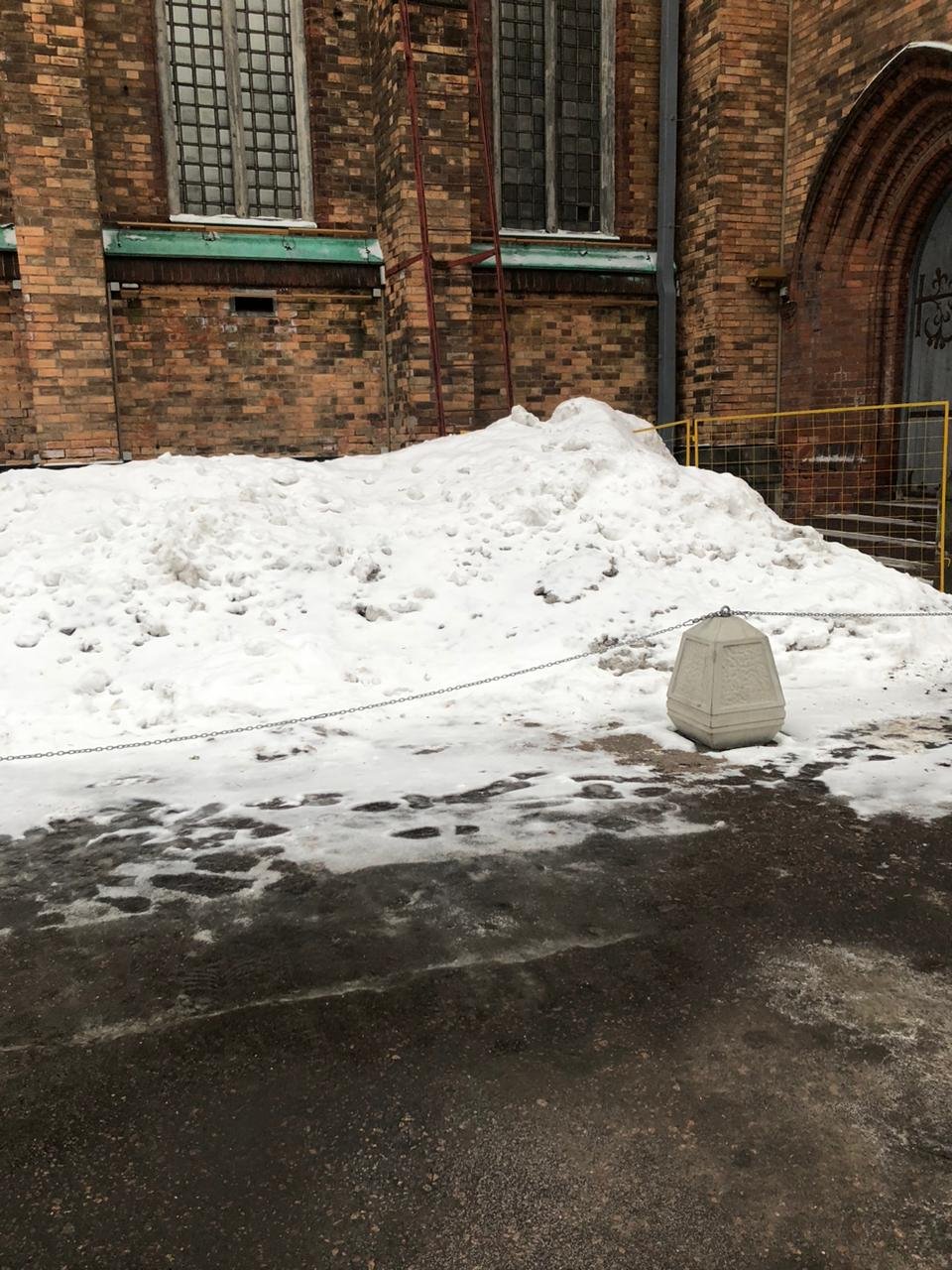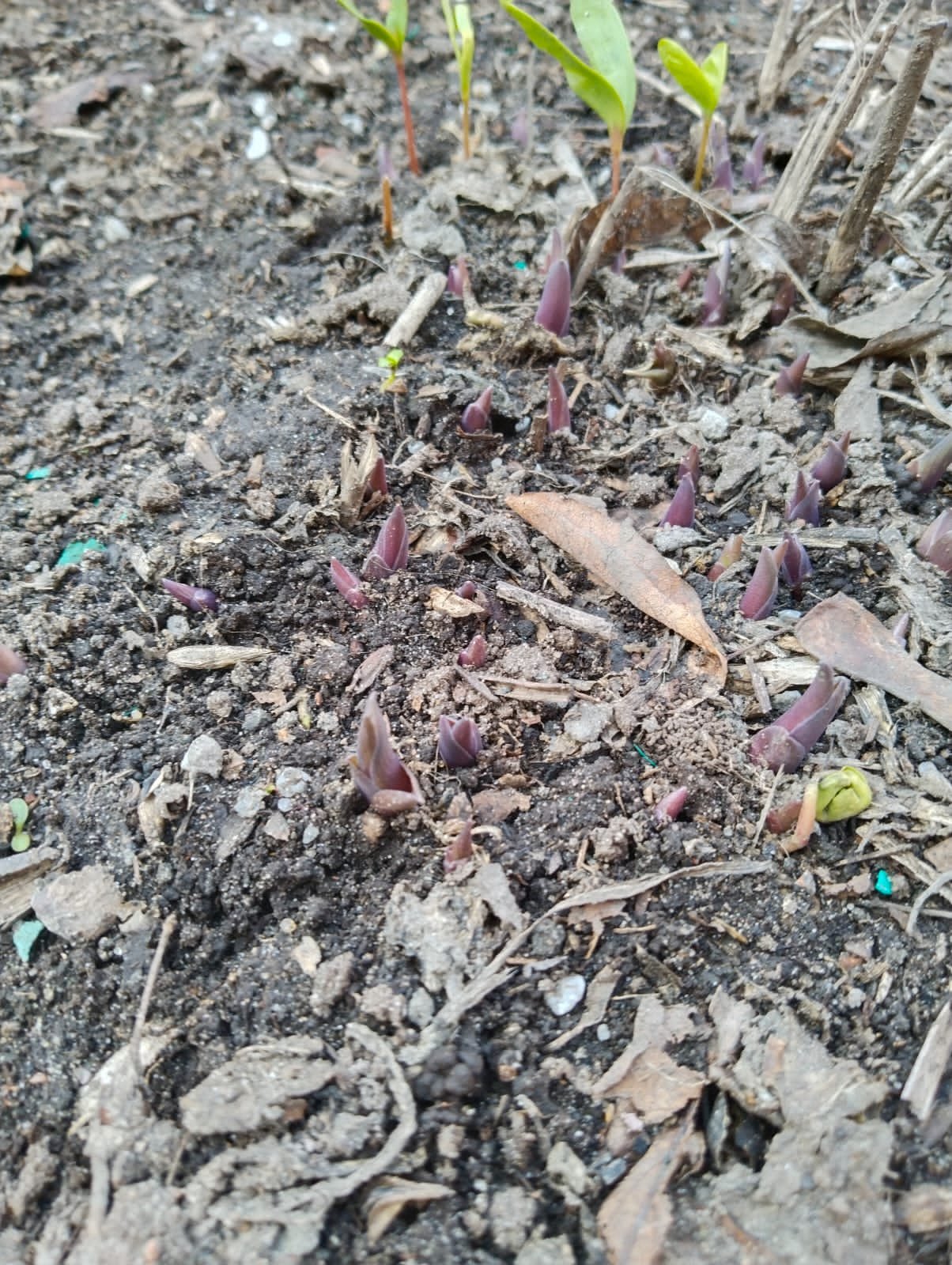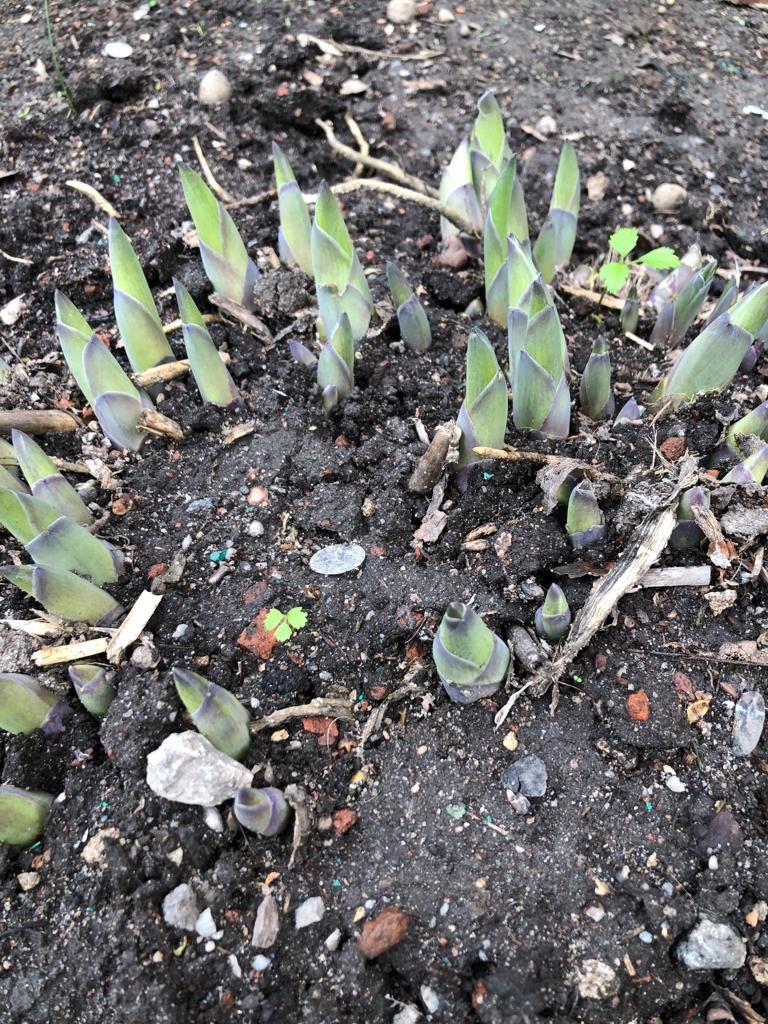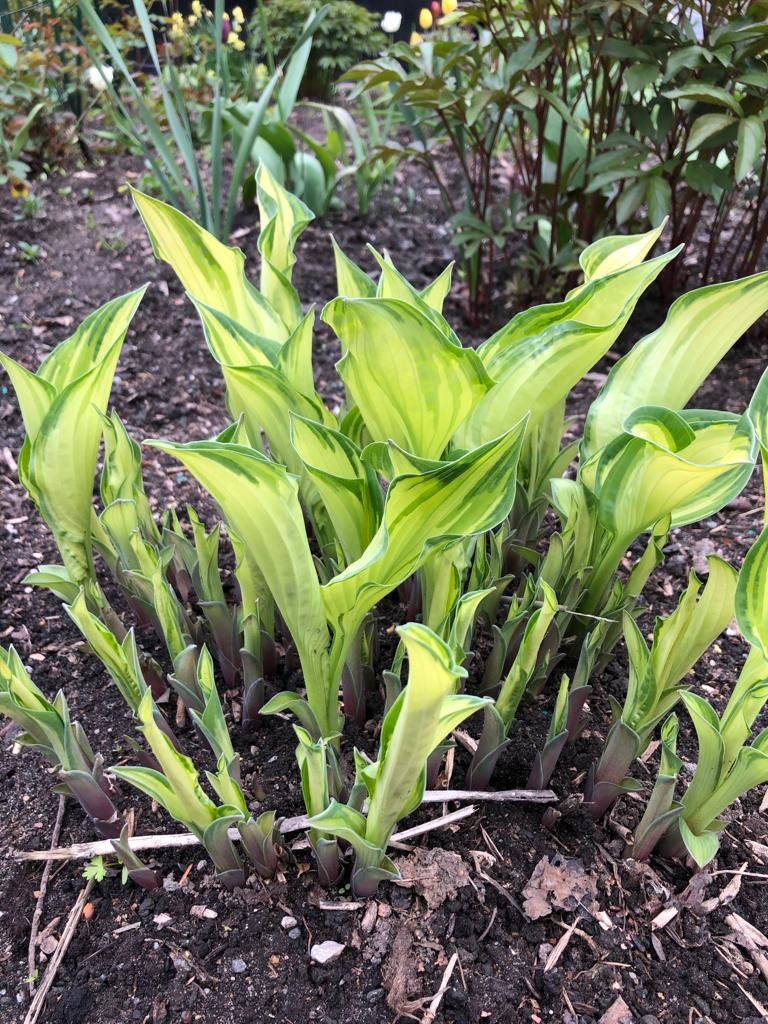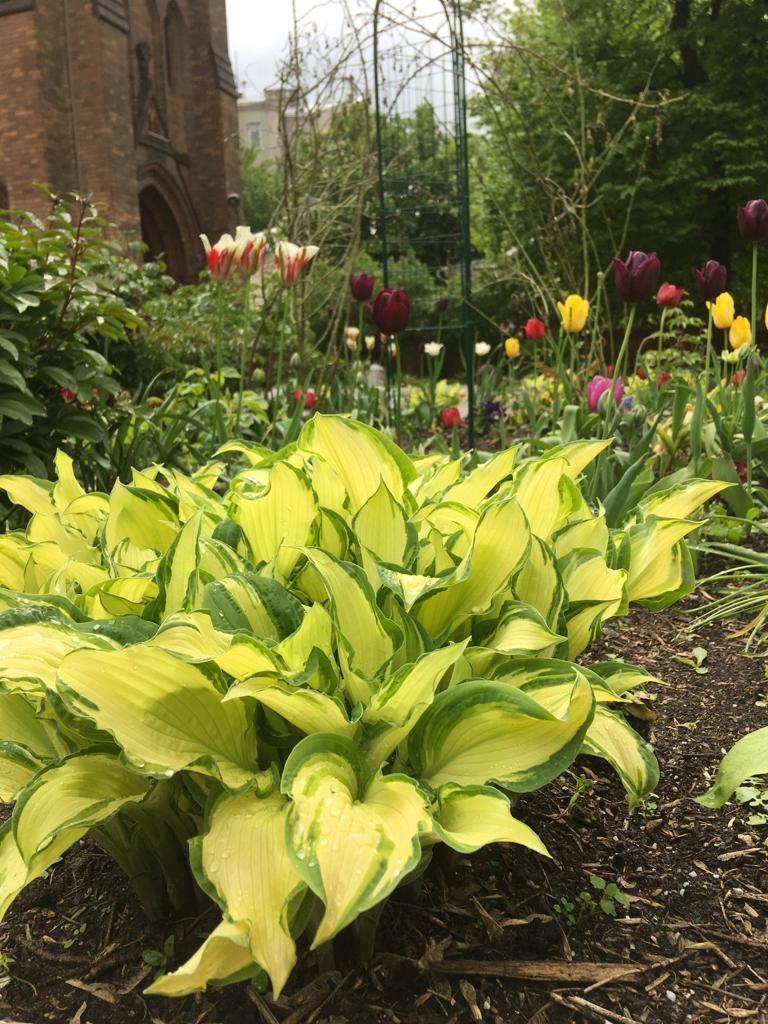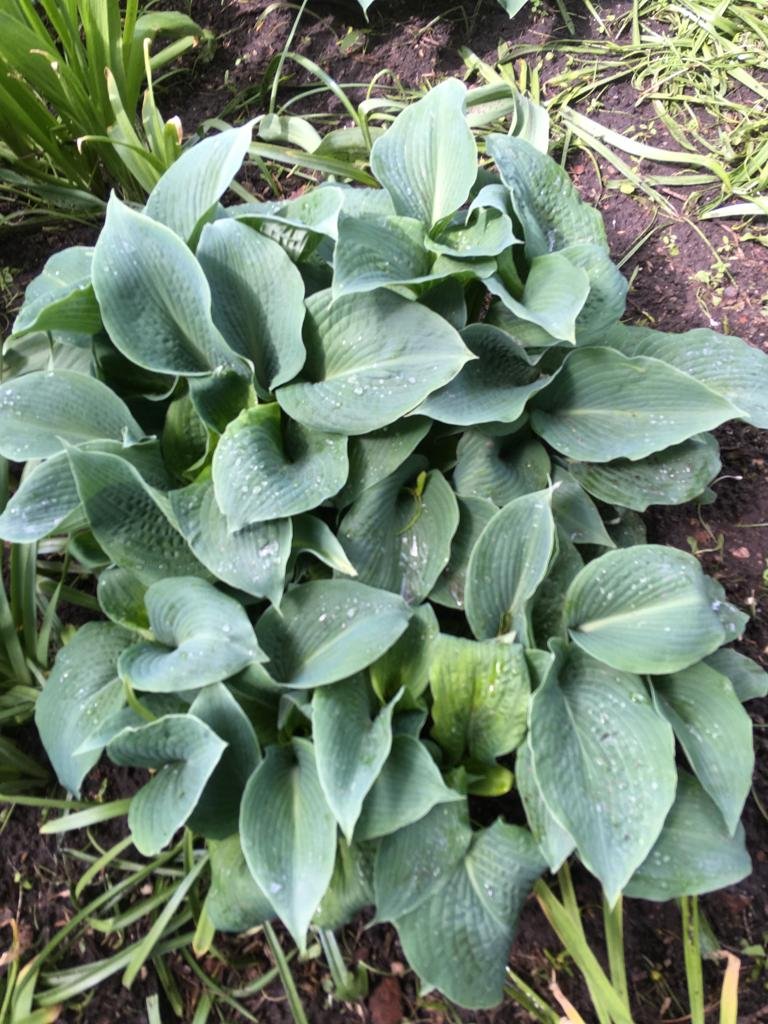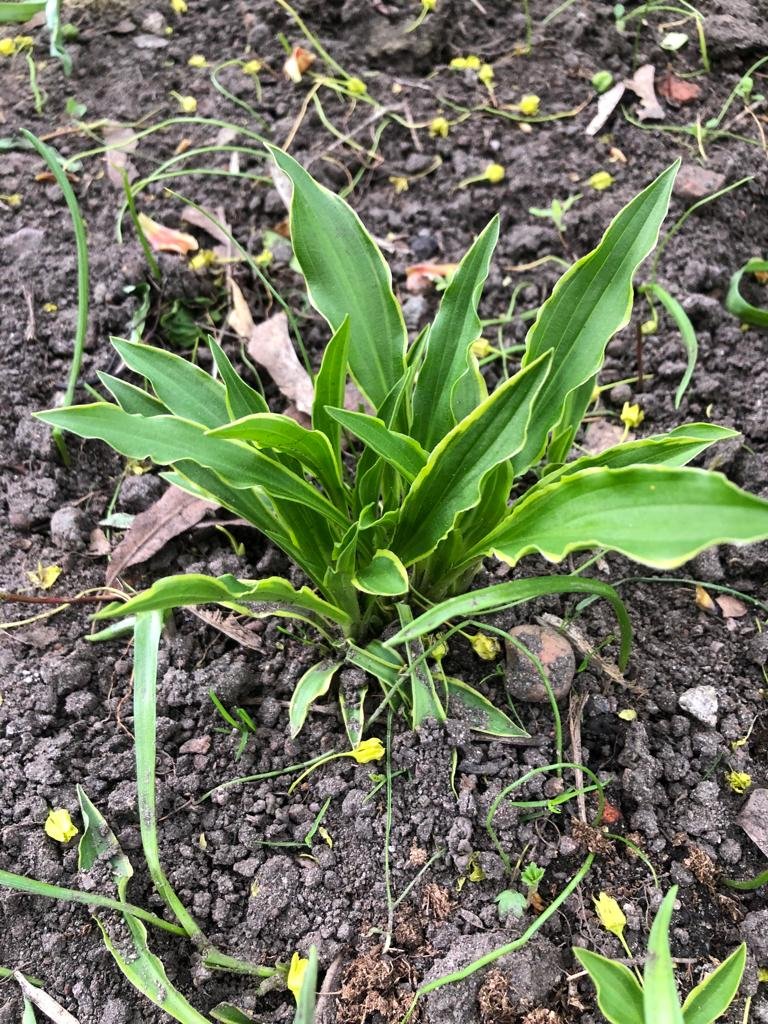Episode 7 Hosta
Vicky Meads
Thanks to Vicky Meads of New Forest Hosta for so much wonderful information about these beautiful plants. Congratulations on just winning a GOLD at the RHS Malvern show. You can find lots to look at and read on her website.
Alison Rogers lives in Moscow, in the Vicarage of St Andrew’s Church, which is about ten minutes walk from the Kremlin.
St Andrew’s Moscow
Below are pictures from Alison Rogers of the church garden. The snow has to be cleared from the church roof and often lands in piles on the garden! However as you can see, the hostas, including the miniatures - survive and thrive. No snails in sight!
However for those of us who are struggling with the snails, I promised I would put Vicky’s recipe for the garlic wash on this page! This is from Vicky’s website:
One of the most frequent questions we are asked is how do I stop slugs and snails eating my hostas.
Different people will have different answers, however the method that we always recommend is to make your own garlic spray and to use this. It is very simple to make and is very effective if used correctly. NB store in a plastic NOT a glass bottle!
The secret is to start early in the year, we tell people to begin drenching their pots or beds where their hostas are planted on Valentines Day, and to apply regularly to the plants once they begin to grow. During the season you should try and spray your plants every 7-10 days or after heavy rainfall. Remember that the more consistent you are the better effect it will have. One other thing to also try and do is to go out into your garden an hour or so after dark and find the culprits.
Here is our recipe.
Take 2 whole bulbs of garlic, crush and place in a saucepan. Add 2 pints of water and boil for around 10-15 minutes. Please be aware that this does produce quite a pungent smell so if possible you may want to do this outside on either a camping stove or similar.
Once this has cooled, strain the liquid off and place into a plastic bottle. This will give you your concentrated mixture. To dilute, the ratio is 1-2 tablespoon of concentrate to 8 pints of water, place this into a normal garden sprayer and cover the foliage of the plants with the mixture.
Store in a cool spot outside.
How to grow hostas - advice from Vicky
In the garden or in a pot?
If you're going to plant into the ground, go for something that has got a better pest resistance, full stop, don't go near anything else if you're just starting out, so go for something with a thicker leaf. I would never really put out miniatures or smalls straight into the ground. There is probably a couple of things like blue mouses that you could possibly get away with out there or put them in a trough, something that's really quite free draining for them for the winter.
Pots are simple. 95% of hostas are very happy in pots. There's only a few that don't like the pot and like the ground. Things like Francis Williams likes to go in the ground more, I would say more than a pot. And it will be the giants that struggle more going in the pot than in the ground.
Hosta recommendations?
Oh, too many, too many, too many, too many, too many, insane. That's a horrible question and insane. But for a very easy starting hosta, things like June is fantastic. You can put June in a pot or the ground. She can go anywhere. You can do what you want with her. She'll grow anywhere.
Soil: I like to use a multi-purpose and I will add with to that a third of John Innes, number two or three. And then I like to add a really good amount of perlite. A good 10% of my mix will be perlite. And that just creates really great aeration within the soil. They absolutely thrive on it and they love it.
Aspect: So if you're in shade, there is some that will only take the shade. Every hosta will take shade, but only a few can cope with the sun. But there's definitely some hostas like June, that can take a really good amount of sun. And with June, her color, she changes. She's like a little chameleon. In the summer, her leaves, the central part will go really nice and cream, but you can move her into the shade. And the center bit will go green, a lot deeper color. So yes, just think about where you're planting it and look at the requirements for that plant and the sizes.
Watering: I wouldn't water over the leaves personally. Basically with tap water, tap water normally marks the leaves. Rainwater is absolutely fine to water overhead, but tap water, no. We always say if you're growing in pots, try and keep them in the summer period with a dish underneath and water from the dish and they take up what they want and you really can't overwater them. But otherwise, hostas are better off having one really good water once a week than constant daily watering that makes them shallow rooted and they don't want to be constantly sodden up around their necks. You should let the top 10% of the soil dry out between watering and you just look at the plants. It will tell you when it wants watering.
Slugs and Snails: You can always have your sacrificial lamb. I have them. So there's some hostas that are really, really yummy compared to others. And you can have them with other plants as well. So a yummy hosta, something with a very thin leaf. Basically anything could go towards that. So when I go out hunting, I will hunt for slugs, snows, vine weevil, everything. And I will go to those sacrificial plants first to see; they can smell them, they can taste them, they find them. And I will pick everything off of that. It works a treat. I mean, sometimes you plant strawberries and I hate to say even Heuchera, they all can attract different pests. And if you have a lovely collection, don't put your sacrificial lamb amongst it, put it away from it so you're not calling them into that collection. You will put it in the opposite corner and they will go there. It's the same when people use things like slug pellets. I mean, they don't work anywhere near like they used to because the Metaldehyde ones are now banned. But people would cast them just generally around the garden and in handfuls and they put too much and then they wouldn't work anyway. Less is more when it comes to things like that. And don't actually, I wouldn't actually put them under the plant, but I would put them away from it so they will you're calling them away from the plant and that's where they will go and eat.



